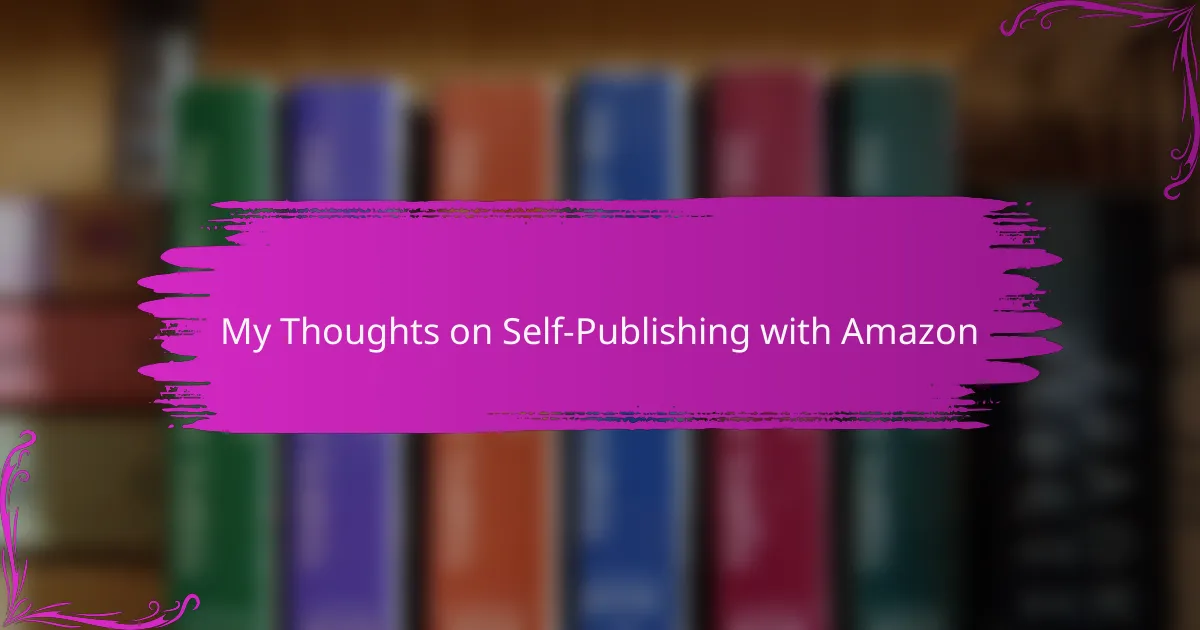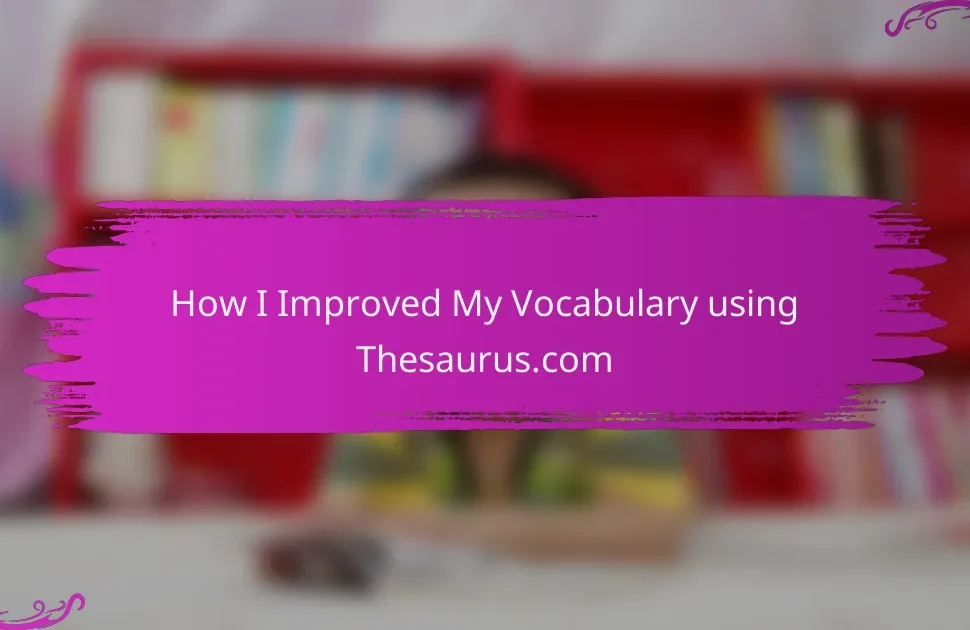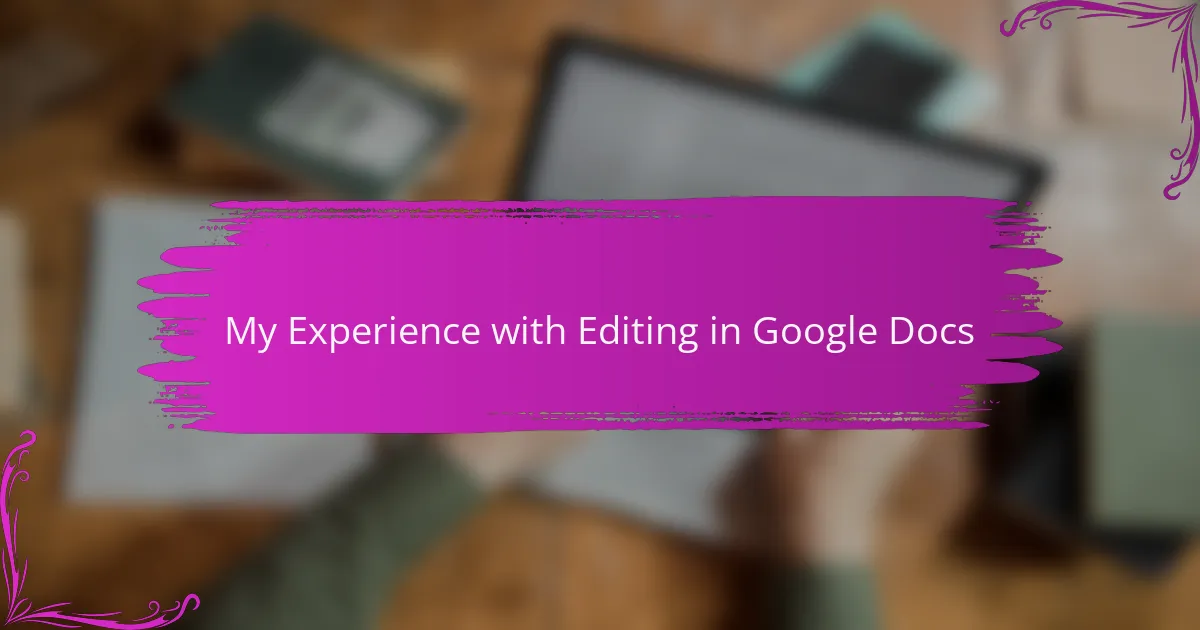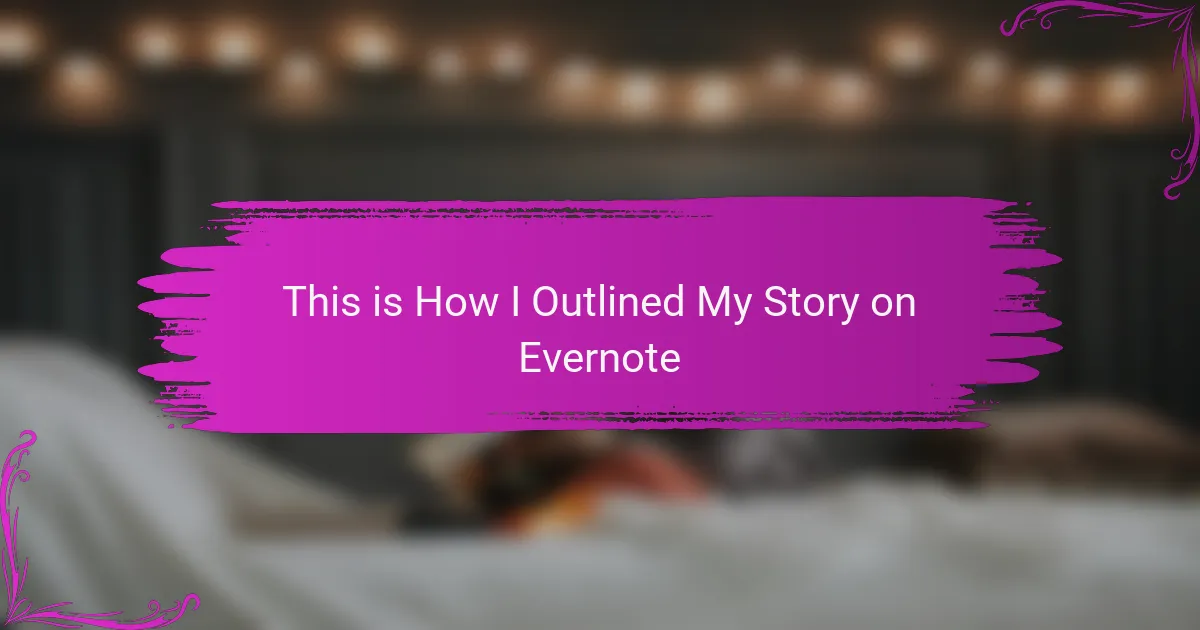Key takeaways
- Self-publishing offers creative freedom and control, allowing authors to shape every aspect of their work, including pricing and promotion.
- Key platforms like Amazon KDP, IngramSpark, and Draft2Digital provide various distribution options; authors should choose based on their specific goals.
- Embracing feedback and investing in marketing are crucial for growth and connecting with the audience.
- Learning about formatting and cover design significantly influences reader engagement and the overall success of the book.
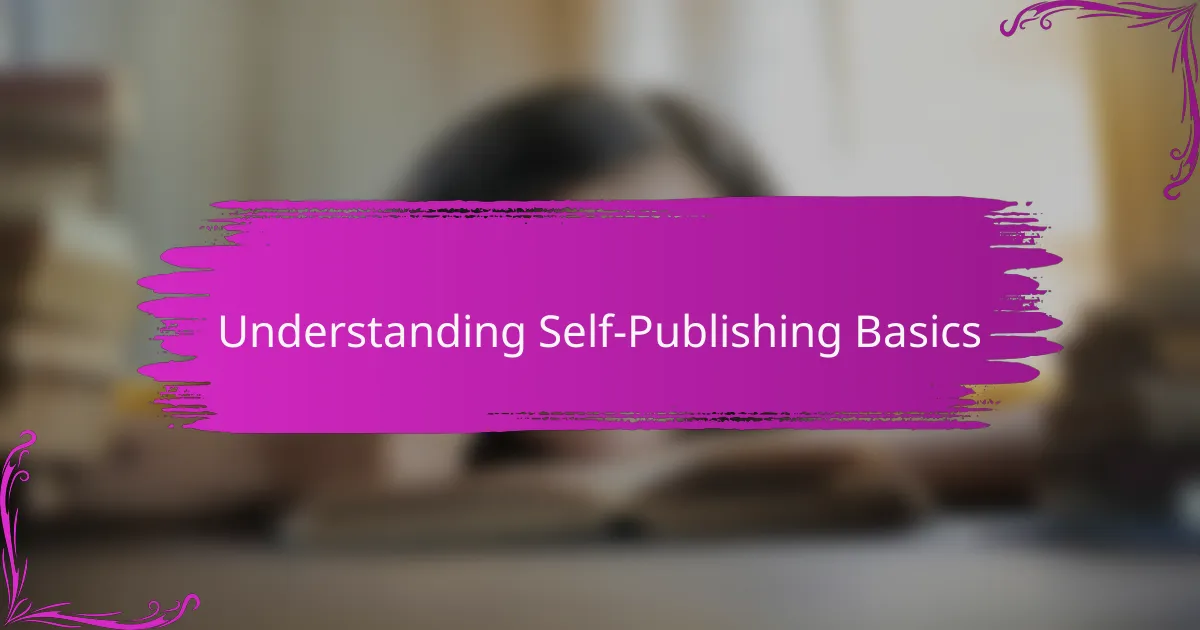
Understanding Self-Publishing Basics
When I first dipped my toes into the self-publishing world with Amazon, I was both excited and overwhelmed. It’s remarkable how accessible this platform makes publishing, allowing authors like me to bypass traditional gatekeepers. The feeling of knowing I could share my story with the world was exhilarating, yet I quickly realized that understanding the basics was crucial for success.
Getting your book online might seem straightforward, but there are several key elements to consider. Here’s a quick breakdown:
- Formatting Your Manuscript: Proper formatting is essential for a professional presentation.
- Cover Design: A captivating cover can draw readers in and set your book apart.
- ISBN and Copyright: These protect your work and establish ownership.
- Pricing Strategies: Finding the right price point is vital to attract readers while ensuring you earn from sales.
- Marketing Your Book: Self-publishing requires active promotion to reach potential readers.
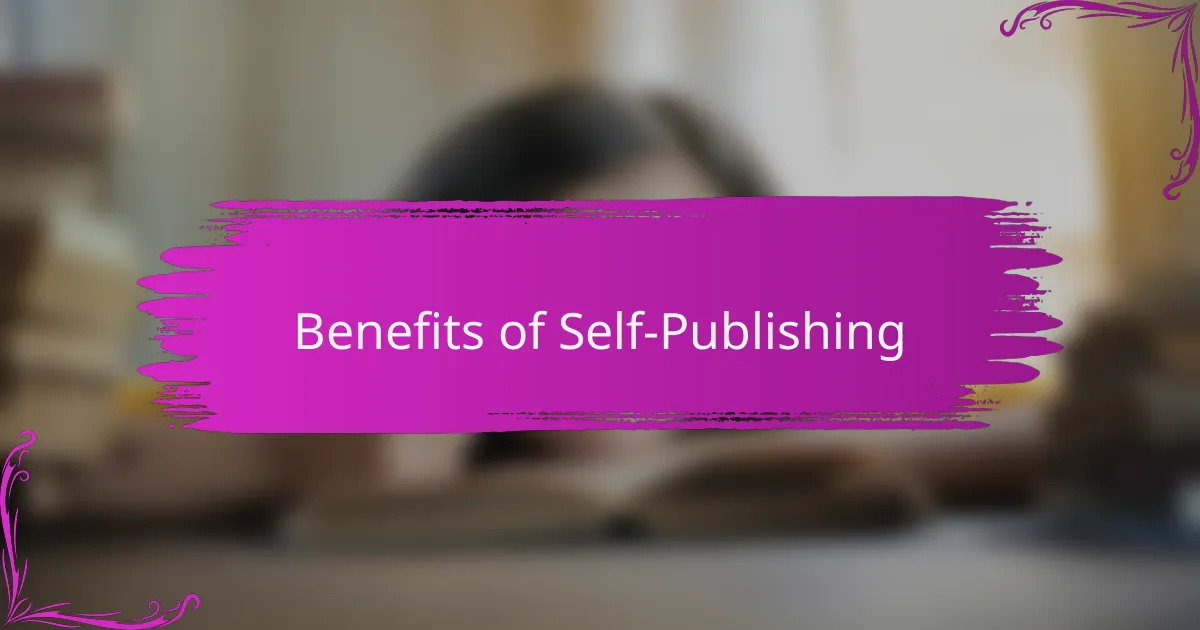
Benefits of Self-Publishing
Self-publishing opens up a world of creative freedom that I never experienced in traditional publishing. It felt liberating to make decisions about every aspect of my book, from the title to the cover design. I could infuse my personality into the project, which made the whole process much more enjoyable.
Another compelling benefit is the control I gained over my royalties. With traditional publishers, the earnings are often significantly reduced after various cuts. Knowing I could set my own pricing and keep a larger share of the profits was not just empowering; it also motivated me to work harder on marketing my own book.
Additionally, self-publishing through Amazon allows for immediate feedback from readers. I cherish the reviews and ratings my books receive, as they help me improve and understand my audience better. Isn’t it incredible to connect directly with readers and make adjustments based on their input? For me, this interaction has turned my writing journey into a collaborative adventure.
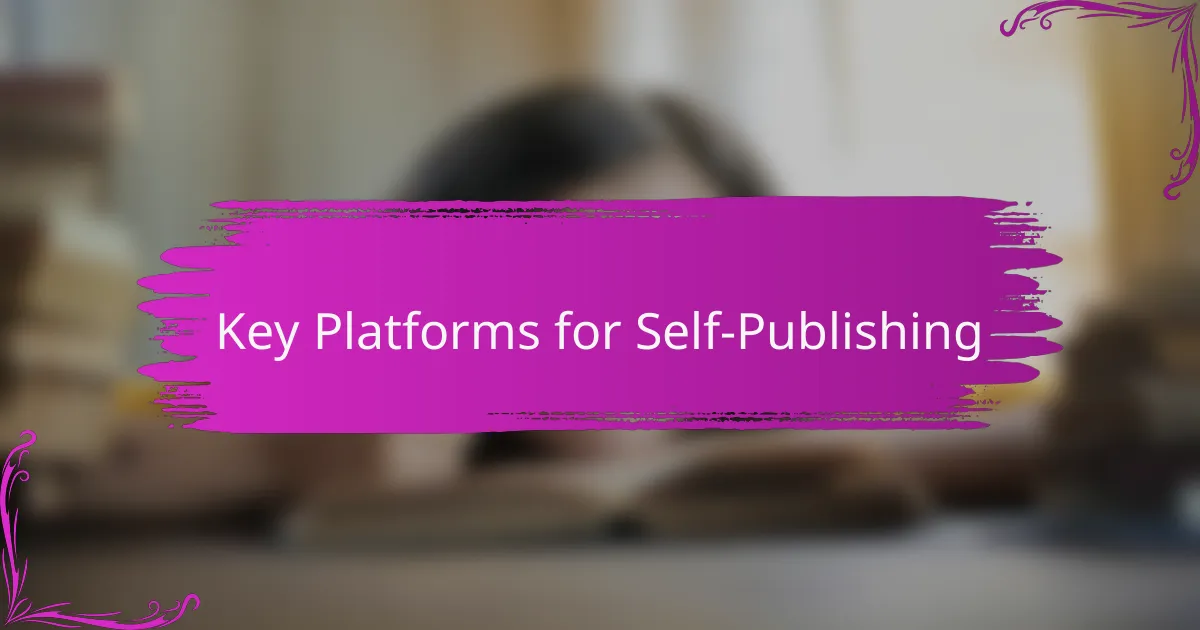
Key Platforms for Self-Publishing
When it comes to self-publishing, Amazon is often the first platform that comes to mind. I remember my excitement when I published my first book through Amazon Kindle Direct Publishing (KDP); it felt empowering to take control of my work and make it available to readers worldwide. But Amazon isn’t the only game in town; there are several other platforms worth considering, each with its unique strengths and weaknesses.
For example, IngramSpark offers wider distribution options, reaching bookstores and libraries, which is something I found incredibly valuable when looking to expand my audience. On the other hand, platforms like Draft2Digital simplify the process of distributing to multiple eBook retailers, which can save time and effort. Each platform has something to offer depending on what you’re looking for.
Here’s a comparison of some of the key self-publishing platforms:
| Platform | Key Features |
|---|---|
| Amazon KDP | Large market reach, easy to use, royalty rates up to 70% for eBooks. |
| IngramSpark | Extensive distribution, professional quality printing, but setup fees apply. |
| Draft2Digital | Wide distribution, user-friendly interface, free to use; takes a cut from sales. |

Overview of Amazon Self-Publishing
Self-publishing with Amazon has truly transformed the literary landscape. I’ve found it to be an accessible platform for writers like myself, offering a chance to bring our stories to life without the hurdles of traditional publishing. The ease of uploading manuscripts and the vast reach of the Kindle Store mean that my work can reach readers all around the globe, which is incredibly exciting.
One aspect I particularly appreciate about Amazon Self-Publishing is the control it gives authors over the entire process. You get to set your own prices, choose your cover design, and even decide how much promotion to invest in your book. It empowers us to be both creators and marketers, which adds a whole new layer to the writing journey.
Here’s a comparison table highlighting some key features of Amazon Self-Publishing.
| Feature | Description |
|---|---|
| Cost | Free to publish; Amazon takes a percentage of sales |
| Royalties | Up to 70% on eBook sales depending on pricing |
| Control | Authors retain full rights and control over their work |
| Distribution | Global reach through Amazon’s platform |
| Formats | Supports eBooks, paperbacks, and hardcover options |
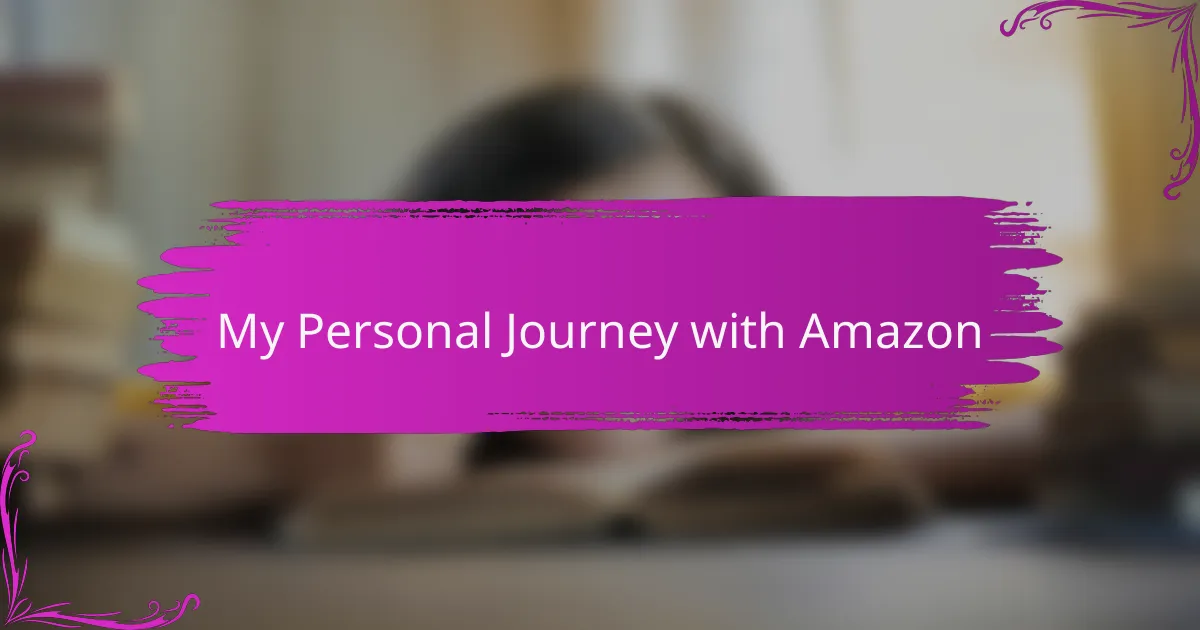
My Personal Journey with Amazon
When I first ventured into self-publishing on Amazon, I felt a mix of excitement and anxiety. I remember staring at my manuscript, wondering if I was truly ready to share my work with the world. Taking that leap was intimidating, but seeing my book available for readers on a platform like Amazon gave me a sense of accomplishment I hadn’t anticipated.
Throughout my journey, I’ve learned so much about the process, from formatting to marketing. It’s not just about writing; it’s about understanding your audience and how to engage them. I’ve come to appreciate the creative freedom self-publishing offers. It’s empowering to have complete control over my work—something I wouldn’t trade for anything.
- My first uploads were both thrilling and terrifying; I checked my book’s status daily.
- Figuring out formatting issues felt overwhelming at times, but online resources were invaluable.
- I quickly realized the importance of cover design; a good cover can really draw readers in.
- Getting feedback from readers transformed my writing process and boosted my confidence.
- Learning to market my book has been a journey in itself, but seeing sales come in is incredibly rewarding.
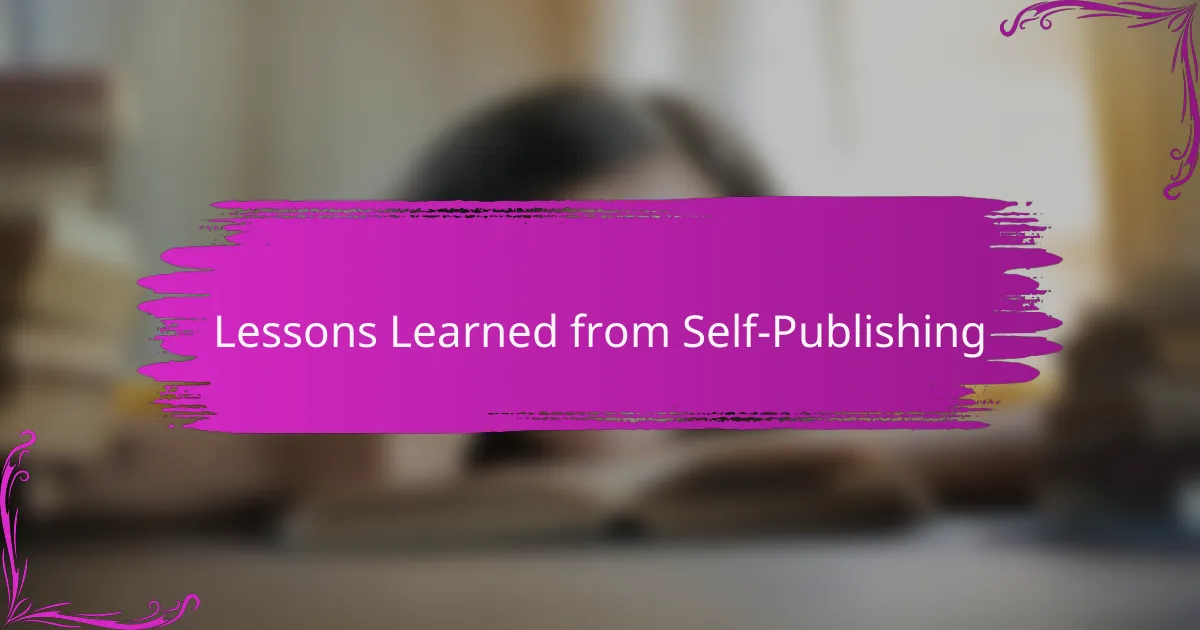
Lessons Learned from Self-Publishing
Self-publishing on Amazon has taught me a wealth of lessons that extend beyond writing. For instance, I learned the importance of embracing criticism. When my first book was published, I received a few harsh reviews that stung at first. But over time, I realized that each piece of feedback, no matter how tough, provided an opportunity to grow and refine my craft.
Another critical lesson was the value of marketing. I underestimated how essential it was to promote my work. After launching my first book, I saw how crucial it was to market myself on social media and engage with readers. It was a daunting process initially, but I found that sharing my journey built a connection with my audience that made all the difference.
- Embrace feedback: Critiques can be tough but are invaluable for growth.
- Invest time in marketing: Building your author brand is as important as writing.
- Network with other authors: Collaborating can provide support and new opportunities.
- Stay persistent: There will be ups and downs, but perseverance pays off.
- Learn about formatting and design: A well-presented book can significantly impact reader engagement.
